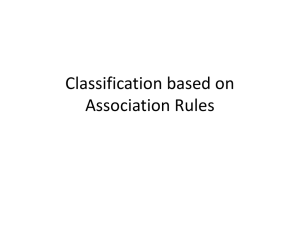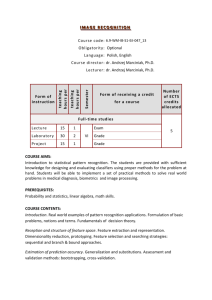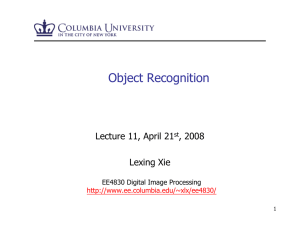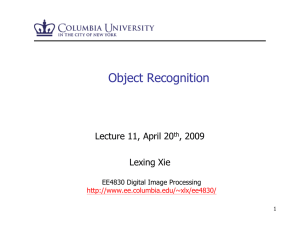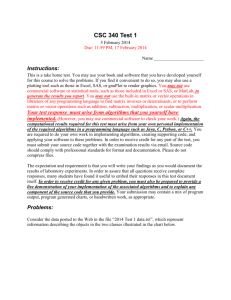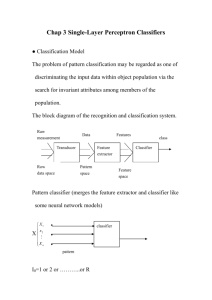Homework Set 1 – Data Exploration and Pattern Recognition
advertisement
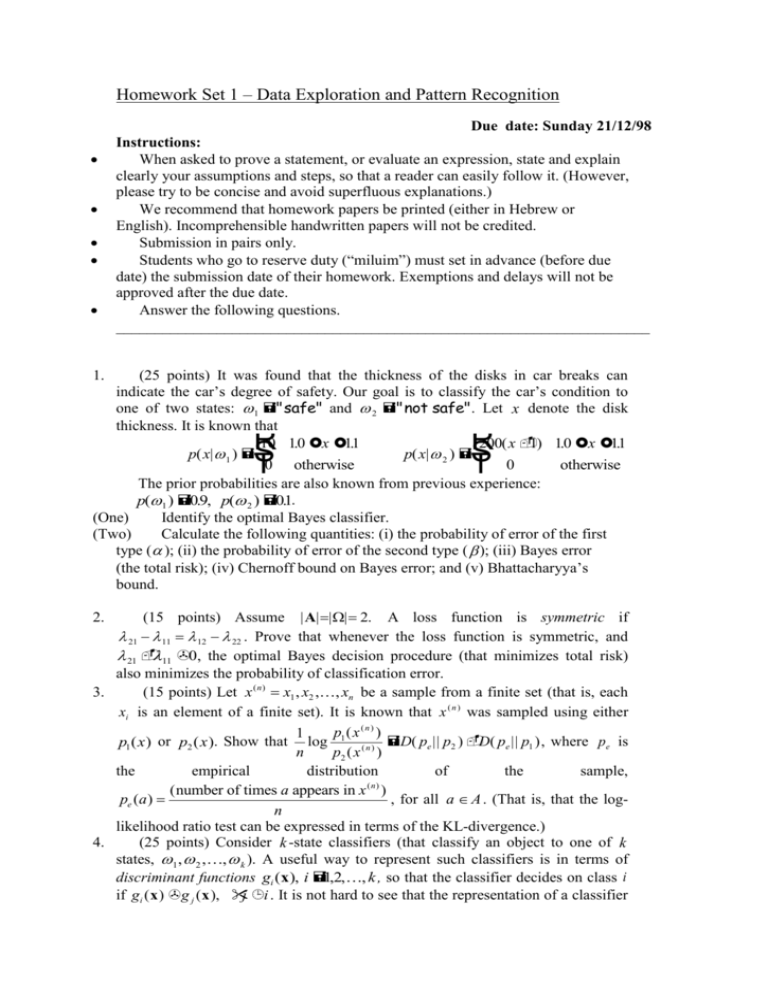
Homework Set 1 – Data Exploration and Pattern Recognition
Due date: Sunday 21/12/98
Instructions:
When asked to prove a statement, or evaluate an expression, state and explain
clearly your assumptions and steps, so that a reader can easily follow it. (However,
please try to be concise and avoid superfluous explanations.)
We recommend that homework papers be printed (either in Hebrew or
English). Incomprehensible handwritten papers will not be credited.
Submission in pairs only.
Students who go to reserve duty (“miluim”) must set in advance (before due
date) the submission date of their homework. Exemptions and delays will not be
approved after the due date.
Answer the following questions.
_____________________________________________________________________
1.
(25 points) It was found that the thickness of the disks in car breaks can
indicate the car’s degree of safety. Our goal is to classify the car’s condition to
one of two states: 1 "safe" and 2 "not safe" . Let x denote the disk
thickness. It is known that
10 10
. x 11
.
200( x
1) 10
. x 11
.
p( x| 1 )
p( x| 2 )
0 otherwise
0
otherwise
The prior probabilities are also known from previous experience:
p(1 ) 09
. , p( 2 ) 01
..
(One)
Identify the optimal Bayes classifier.
(Two)
Calculate the following quantities: (i) the probability of error of the first
type ( ); (ii) the probability of error of the second type ( ); (iii) Bayes error
(the total risk); (iv) Chernoff bound on Bayes error; and (v) Bhattacharyya’s
bound.
R
S
T
R
S
T
(15 points) Assume | A| | | 2. A loss function is symmetric if
21 11 12 22 . Prove that whenever the loss function is symmetric, and
21 11 0, the optimal Bayes decision procedure (that minimizes total risk)
also minimizes the probability of classification error.
3.
(15 points) Let x ( n ) x1 , x2 ,, xn be a sample from a finite set (that is, each
xi is an element of a finite set). It is known that x ( n ) was sampled using either
p1 ( x ( n ) )
1
D( pe || p2 ) D( pe || p1 ) , where pe is
p1 ( x ) or p2 ( x ). Show that log
n
p2 ( x ( n ) )
the
empirical
distribution
of
the
sample,
(n)
( number of times a appears in x )
, for all a A . (That is, that the logpe (a )
n
likelihood ratio test can be expressed in terms of the KL-divergence.)
4.
(25 points) Consider k -state classifiers (that classify an object to one of k
states, 1 , 2 ,, k ). A useful way to represent such classifiers is in terms of
discriminant functions gi (x ), i 1,2,, k , so that the classifier decides on class i
if gi ( x ) g j ( x ), j i . It is not hard to see that the representation of a classifier
2.
in terms of discriminant functions {gi } is not unique since the same classifier is
obtained from { f ( gi )} when f is monotone increasing. For example, the Bayes
classifier is given by gi ( x ) p( i | x ) or by gi ( x ) log p( i | x ) , etc.
(One)
Show that the Bayes classifier can be represented by the discriminant
functions gi ( x ) ln p( x| i ) ln p( i )
(Two)
Considering the classifier of part (a), assume that p( x| i ) are
(univariate) normal distributions, N ( i , i ) . Evaluate and simplify the
discriminant functions for this case.
(Three)
Evaluate and further simplify the discriminant functions of part (b) for
the special case i , i 1, , k . Show that in this case the discriminant
function is linear in x .
(Four)
Evaluate D N ( 1 , 1 )|| N ( 2 , 2 ) and D N ( 1 , )|| N ( 2 , ) . Use
the “differential KL-divergence” defined for densities:
f (x)
D( f || g ) f ( x ) ln
dx
g( x )
5.
(20 points) The optimal Bayesian decision function, that minimizes the total
risk, is deterministic. Prove that no randomized decision algorithm can achieve
lower (expected) total risk. Guidance: use p(ai | x ) , to denote the probability used
by a randomized algorithm for choosing action ai (given the observation x ), to
express the total risk of the randomized algorithm. Then prove that the total risk of
the optimal deterministic algorithm is not larger.
6.
(Bonus question: 10 points) Two different real numbers, x and y , are picked
(their distributions are unknown). You get to see one of them, say x and it is
known that x is the larger (smaller) with probability 1/2. Construct an algorithm
that can decide if x is the larger, with error probability less than 1 / 2, no matter
what the distributions of x and y are. Using the Bayesian framework prove that
your algorithm is correct.
b
g
z
b
g
